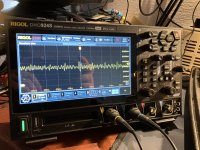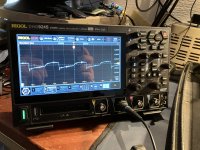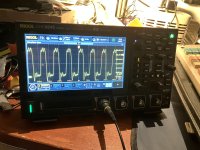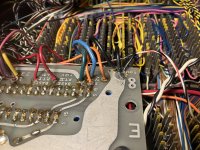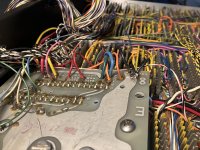Apperently there is a Holiday this week which means I had 2 extra days of weekend... and I decided to go for it, and tore the Wang down all the way.
Started out the same way as lost time, removing the cards, putting them in labelled bags and in a box in order (to make sure they go in correctly later). Unplugged and removed the keyboard, same with the tape drive.
Then took out the 4 bolts securing the inner chassis to the main case, removed the little shield over the voltage regulator on the back, took the fuse out of the back and carefully lifted the inner chassis up a bit.
The wires to the ROM board are long enough to rest the front of the chassis in front of the ROM board, holding the chassis up with one hand to take a picture of the ROM connectors and disconnecting them.
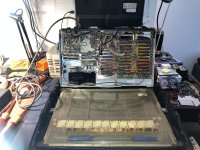
And this revealed the date this machines chassis was build, September 5th 1970
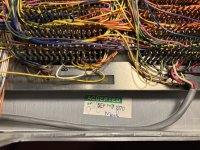
And while I have the thing apart completely, I opened up the plastic cover for the ROM and took some shot of that. I couldn't see anything obviously wrong with it... but it does look very nice, odd to think that this is what holds the microcode for the system.
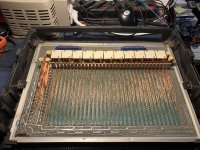
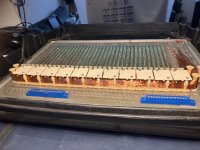
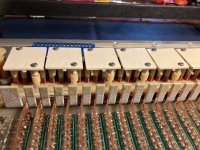

And also some shots of the wiring side of the chassis
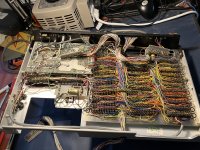
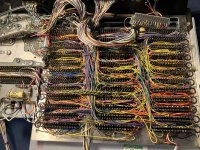

A couple of minor things I did notice, there was a pin on one of the connectors on the back plain that is filled up all the way with wires and it was a bit bend over. It wasn't touching anything now, but my guess was that it might have also been a bit crooked on the card side causing a bad connection.
There was also some webbing and a dead insect/spider in the ROM connector underneath the PSU... and one of the pins on the little connector board that connects into the ROM board from the chassis is a bit discoloured. So there might've been a bad connections there. Also, in my machine at least, the connectorboards that go into the connectors on the ROM board are a little smaller then the connector they slot into. They are all making a connection though, but they were a bit shifted over so I wonder if every connections was as good as it should be.
Otherwise, everything seems to be very nice inside.
The underside of the PSU looks like it has been repaired a few times (or... the fan on the back was hacked in later). I can see that the heat from the diodes is clearly discolouring the PCB of the PSU. But, as far as I can tell from previous testing, the PSU isn't doing anything weird at the moment. I might still reflow a few points just to be sure.

